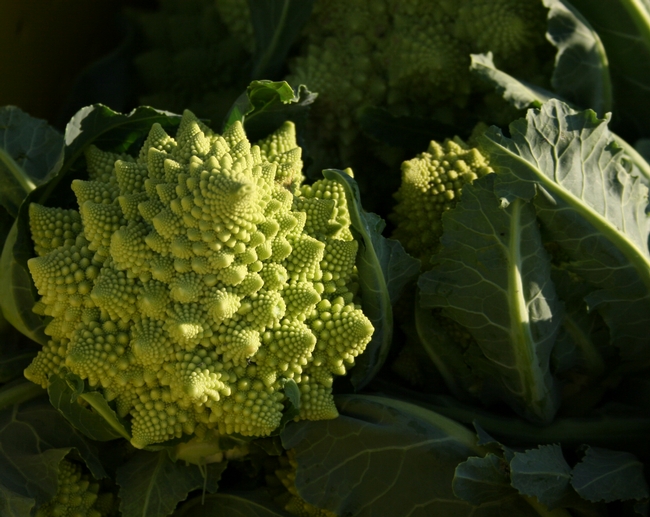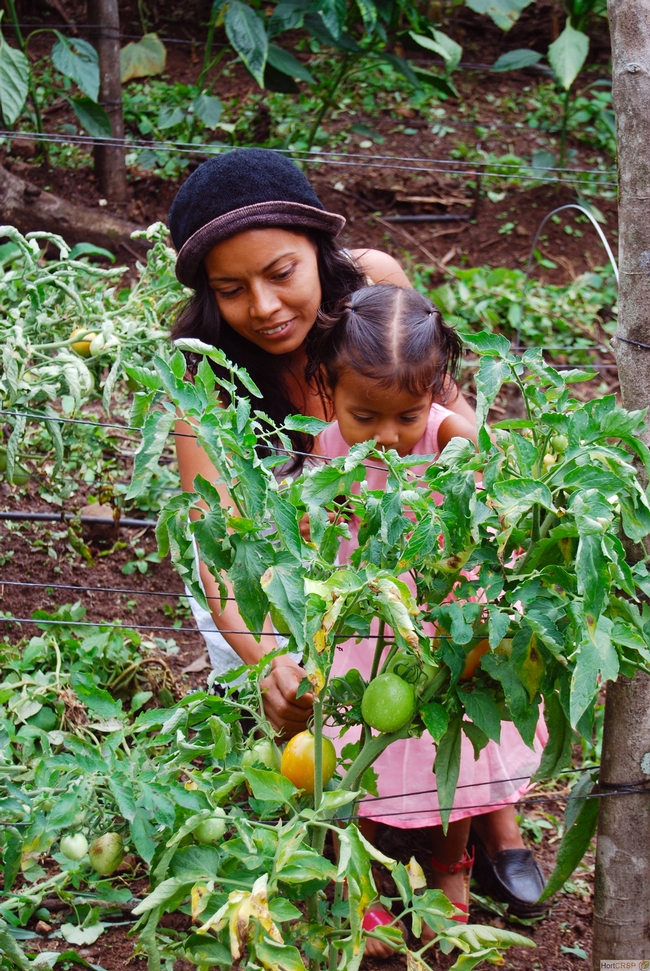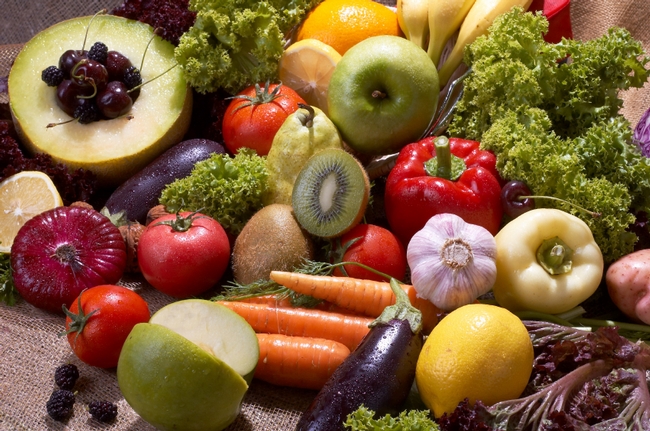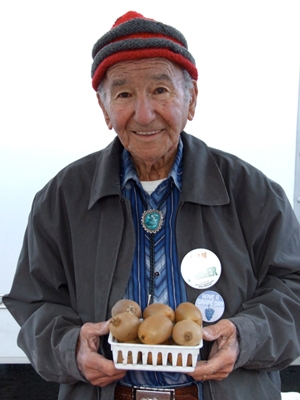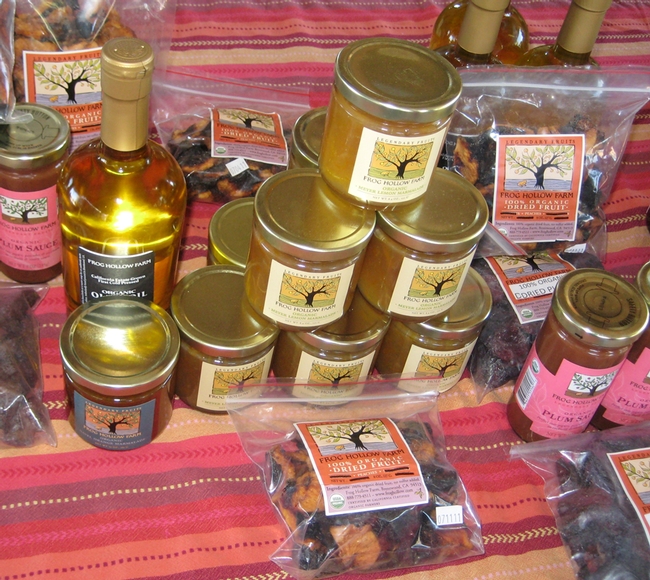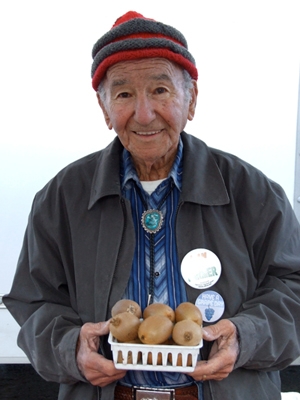UC Food and Agriculture Blogs
Why growing fruits and vegetables matters
From broccoli to watermelon, California farmers grow more than 400 agricultural commodities. In 2011, California was the primary producer of almonds, artichokes, dates, figs, raisins, kiwi, olives, cling peaches, pistachios, dried plums, pomegranates and walnuts— accounting for nearly 100 percent of each of these crops grown in the United States.
When Americans think of “agriculture,” California may not be the first state to come to mind. But the Golden State — just this one state — produced nearly half of all fruits, nuts and vegetables grown in the U.S. in 2011 (source).
In this land of abundance, UC Agriculture and Natural Resources is asking researchers and the general public to discuss, “How do we sustainably feed 8 billion people by 2025?” at the Global Food Systems Forum, April 9. National and international panelists will share insights along the local-global continuum of “California Roots, Global Reach.”
What can Californians add to this conversation that hasn’t already been said? What are we uniquely positioned to address or to share? May I suggest: fruits and vegetables.
Of course, I’m not the first one to suggest this.
According to the Global Horticulture Assessment*, published by UC Davis with input from stakeholders around the world:
“Horticultural crops play a valuable role in food systems by diversifying diets and fostering increased dietary consumption of micronutrients and other plant products known to benefit human health (fiber, antioxidants, etc.).
"Changes in production systems over the past 40 years favor an increase in cereal-based diets. The emphasis on staples has resulted in reduced dietary diversity and the displacement of traditional crops that were important sources of micronutrients such as iron, vitamin A, B-12 and zinc.”
A lack of dietary diversity can signify a serious issue in developing countries where daily eating patterns are centered on starchy staple foods — with very few fruits, vegetables or animal-based products. Reduced dietary diversity can point to micronutrient deficiencies, which could be addressed through fruit and vegetable consumption.
Growing fruits and vegetables — to be eaten and sold — has the potential to improve diets while also boosting incomes.
What do you think? Why do fruits and vegetables matter? What can Californians contribute to the questions of global food security? Join the conversation now by following #Food2025 on Twitter.
*The "Global Horticulture Assessment" called for the creation of the Horticulture Collaborative Research Support Program, and serves as a guiding document for the program. With funding from USAID, Horticulture CRSP is led by UC Davis and builds international partnerships for fruit and vegetable research that improves livelihoods in developing countries.
How do we sustainably feed 8 billion people by 2025?
Some of us spent our weekend in the garden or at the farmers market, obsessing over our fresh produce that will get us through the week. Some of us went to bed last night dreaming about a Frostie from Wendy’s and fries from McDonald’s. Still, others of us spent the weekend trying to make ends meet and scraping together barely enough food to feed our families. Bottom line – food is something we all have in common. It’s a universal language. Whether we pride ourselves on eating local and organic, constantly find ourselves in the fast food lines, or stress about how to feed our families each day, food joins us all together.
All 6, almost 7, billion of us.
But what happens when there are 8 billion of us? Will more and more of us spend our weekends trying to scrape together enough food? Will more and more of us start our own gardens and obsess over our fresh produce? Will farmers markets become the new Ralphs? Will we have enough water to feed ourselves? Will we have enough land? How do we sustainably feed 8 billion people by 2025?
“We’re going to have to produce more food in the next 40 years than we have the last 10,000. Some people say we’ll just add more land or more water. But we’re not going to (be able to) do much of either,” says William Lesher, former USDA chief economist.
This is a global issue. But as Californian's and residents of the world’s top agricultural producer, what is our role in meeting these challenges? On April 9, 2013, producers, geo-politicists, ethicists, economists, humanists and many others from around the world will come together to discuss the challenges surrounding our global food systems at the UCANR Statewide Conference: Global Food Systems Forum.
The Global Food Systems Forum will feature Mary Robinson, former president of Ireland and president of the Mary Robinson Foundation - Climate Justice, and Wes Jackson, founder and president of The Land Institute, as the keynote speakers. The program will include a Global Panel, discussing key issues such as resource limitations, ethnical quandaries, climate change, responsibilities, etc. A California Panel will also take place, tackling issues such as California responsibilities, productivity, policies, markets and research.
But this conversation isn’t just about UC Agriculture and Natural Resources. It’s about all of us. We all need to take a stand and advocate for our food. If you watch what you eat, you should join the conversation. If you love what you eat, you should join the conversation. If you worry about how you will eat in the future, you should join the conversation.
The public is invited to participate in this one-day event via a live online webcast. You can also join the ongoing conversation on twitter by following the hashtag #Food2025. Make your voice heard. Stand up for your food, and help shape our future global food systems.
Learn more about the Global Food Systems Forum and register to watch the live webcast at food2025.ucanr.edu.
Watching your weight
If you want to maintain a healthy weight, UC Cooperative Extension advisor Susan Algert has some sage tips: snack wisely; eat more fruits and vegetables; keep a food record and stay active.
Algert shared the latest dietary advice from the U.S. departments of Agriculture and Health and Human Services with UC Office of the President employees at a brown bag event Wednesday in Oakland co-hosted by UC Health and UC Agriculture and Natural Resources. (Listen to an audio recording of the event.)
“How many of you really watch your weight?” Algert asked the audience. “No matter how hard we try, it seems to creep up a little bit as we get older.”
Indeed, studies have shown that adults gain an average of around a pound a year. How that happens might surprise you, according to Algert, a nutrition advisor with UC Cooperative Extension of Santa Clara, San Mateo and San Francisco counties.
Research from a large representative study of women in the U.S. shows that as little as an extra 13 calories per day – the equivalent of consuming one extra ounce of soda and walking one minute less – has led to an average weight gain of 35 pounds in 28 years since the 1970s. Eating an extra chocolate chip cookie every day for life? Expect to gain 6 pounds.
“People always say, ‘I don’t know how I gained it.’ We don’t usually gain weight by eating fruits and vegetables. It’s all those goodies loaded with fat, sugar and salt that we snack on,” said Algert, who previously was a clinical research nutritionist with UC San Diego School of Medicine’s Warren Celiac Center.
People also need to be careful when eating out. She pointed to examples such as Cheesecake Factory’s Bistro Shrimp Pasta, which has more than 3,000 calories – 1 ½ times the recommended daily caloric intake for an average adult – and Smoothie King’s 40-ounce Peanut Power Plus Grape smoothie, which contains about a cup of sugar and nearly 1,500 calories.
“If you eat out more than a couple of times a week, you’re in trouble because you’re likely consuming more fat and calories than you realize,” Algert said. Other key factors that lead to weight gain are decreased physical activity, increased television viewing, increased alcohol intake and poor sleep.
So what should you do?
Algert said two reliable sources of nutrition information are the U.S. Department of Agriculture’s MyPlate dietary guidelines and the U.S. Department of Health and Human Services’ DASH (Dietary Approaches to Stop Hypertension) eating plan, which focuses on healthy fat, fruits, vegetables and reduced-fat dairy and limits sweets to no more than five servings a week. Also, UC offers a variety of nutrition education, including the CalFresh program, which reaches 140,000 Californians a year.
Algert encouraged people to buy fresh, local food.
“Vote with your fork,” she said. “Don’t buy junk food. Support a healthy food environment by going to the community gardens and by going to the farmers markets.”
Another suggestion is to keep a food record – track what you eat, when you eat and what your mood is (do you eat ice cream when you are stressed?).
Most of all, keep trying. Even the experts wrestle with their weight.
“I am trying to increase my fruit and vegetable intake to the 8 to 10 per day recommended in the DASH diet. I have a bit of a sweet tooth. It is a challenge in today’s food environment!” Algert said.
Fresh edition of Small Farm News: Vol. 1, 2013
Welcome to the newest edition of Small Farm News, the newsletter of the UC Small Farm Program. We no longer publish a traditional print newsletter, but have transitioned to this online-only format. We hope you find this new edition interesting, useful - and easy to share. You can read it all now or bookmark Vol. 1 2013 for later, or print a pdf version of the newsletter.
In this issue:
- California Small Farm conference 2013
There is still time to register for the California Small Farm Conference, being held on March 10-12, 2013. Join 500 farmers and representatives from the University of California, USDA agencies, farmers markets organizations and other nonprofits, as they gather at the Fresno Convention Center. Read more... - Homemade Food Act/AB 1616
California's Homemade Food Act (AB 1616) became effective on January 1, 2013. The bill allows individuals—including small-scale farmers--to market certain non-potentially hazardous foods made in private-home kitchens referred to as “cottage food operations” (CFOs), subject to several conditions--as described below. Read more... - Microloan Program for Small-scale and Family Farm Operations Launched by USDA
USDA launched the new year by announcing an exciting new program that it has developed: microloans designed to help small and family farm operations, and socially disadvantaged farmers obtain loans under $35,000. The microloan program also has a more simplified application process in comparison to traditional farm loans. Read more... - Food Safety Modernization Act
How can I begin to describe the draft regulations for the Food Safety Modernization Act (FSMA)? On January 4, 2013, FDA came out with two sets of proposed rules, stating that comments from the public are due by May 16, 2013. One set of proposed rules relates to processed foods and the other one to produce. There are three additional sets of proposed rules yet to come... Read more... - CDFA Food Safety Cost Reimbursement
Small-scale growers can get reimbursed for part of their food safety audit, testing, or training expenses. California’s Department of Food and Agriculture (CDFA) has a reimbursement program to assist specialty crop producers with the cost of first time food safety audits, informational assessments, water and/or soil testing, and training regarding Good Agricultural Practices (GAPs). Read more...
New to the newsletter?
If you aren't already, become a subscriber today. You may also want to explore back-issues in our newsletter archives.
Thanks for reading!
California Small Farm Conference 2013
There is still time to register for the California Small Farm Conference, being held on March 10-12, 2013. Join 500 farmers and representatives from the University of California, USDA agencies, farmers markets organizations and other nonprofits, as they gather at the Fresno Convention Center.
Activities on Sunday include five Field Courses and the Tasting Reception. On Monday and Tuesday, there will be 25 workshops organized across five themes—Farmers Markets, Production, Farm Management, Marketing and Emerging Issues, along with keynote speakers at the plenary sessions.
For more information, check out: http://www.californiafarmconference.com/



